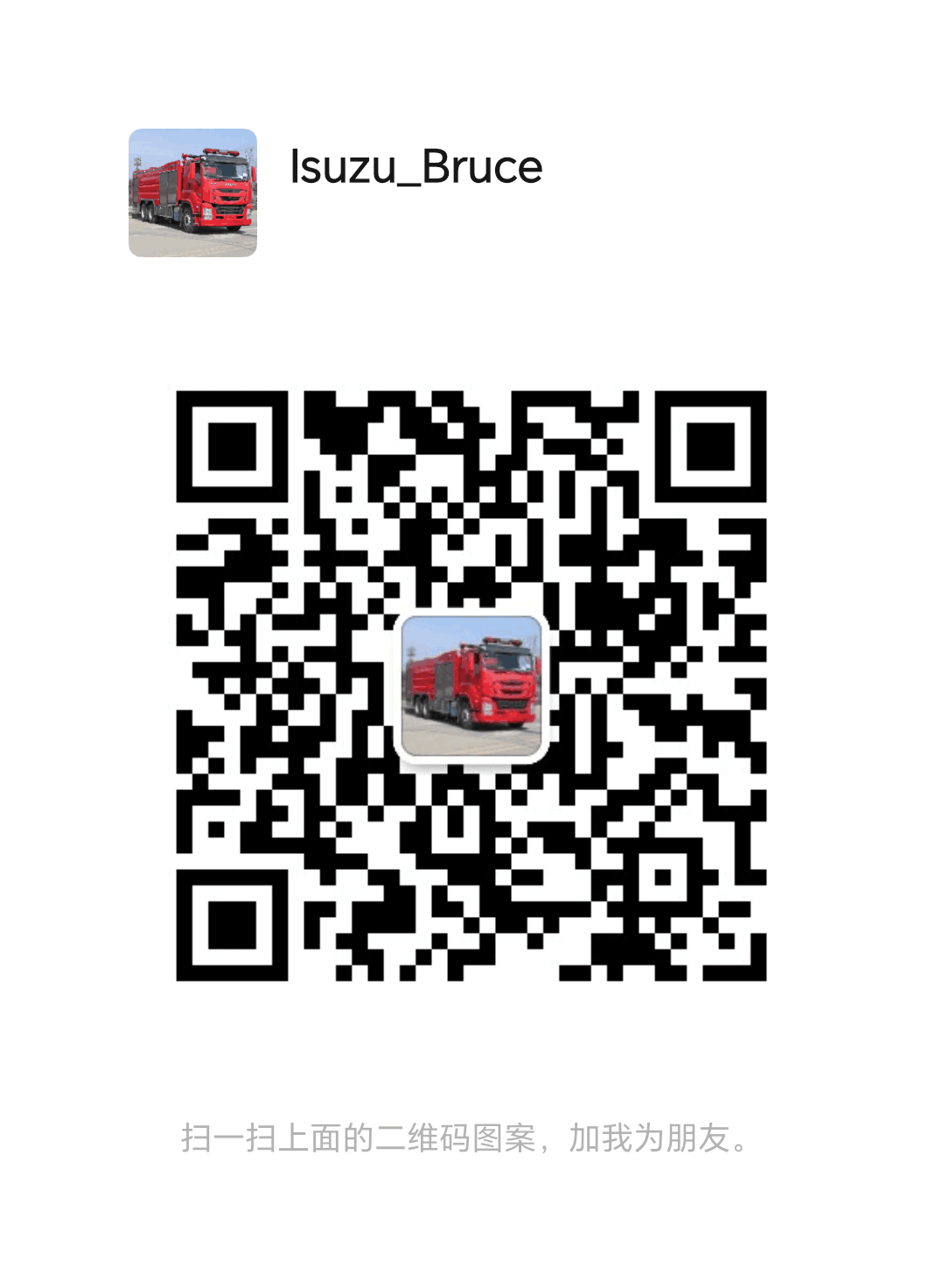


The conventional operation sequence of the fire protection system of the heavy-duty Isuzu water tank fire truck is the parking operation, the water discharge operation of the vehicle-mounted cannon or the water discharge operation of the water outlet, the water replenishment operation and the vehicle closing operation.
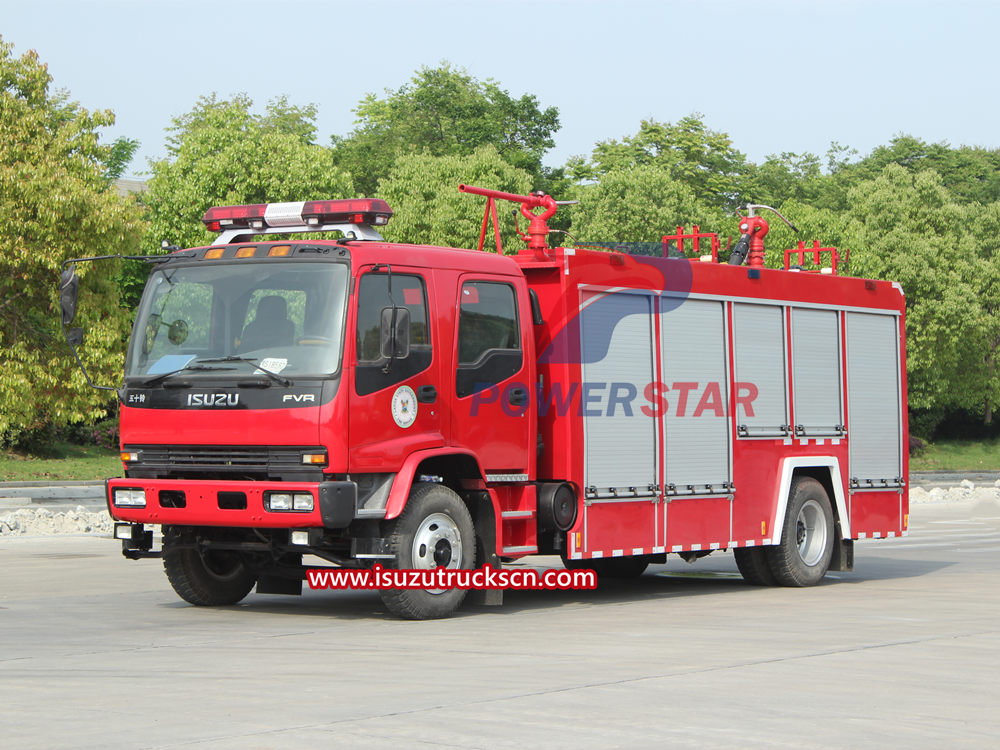
A. Parking operation
1. After the heavy-duty water tank fire truck arrives at the work site, the driver should choose a safe parking position for the vehicle to stop and brake.
2. During fire fighting and rescue, you should choose a solid site in the upwind or crosswind direction of the fire site or the toxic and harmful gas leakage site to stop the vehicle to ensure that personnel and vehicle braking, pneumatic valve switching and other operations can be performed normally.
3. After the vehicle has stopped, keep the engine running slowly, tighten the hand brake, and install the wheel blocks. It should also be checked to confirm that the source pressure remains above 0.6MPa to ensure that vehicle braking, pneumatic valve switching and other operations can proceed normally.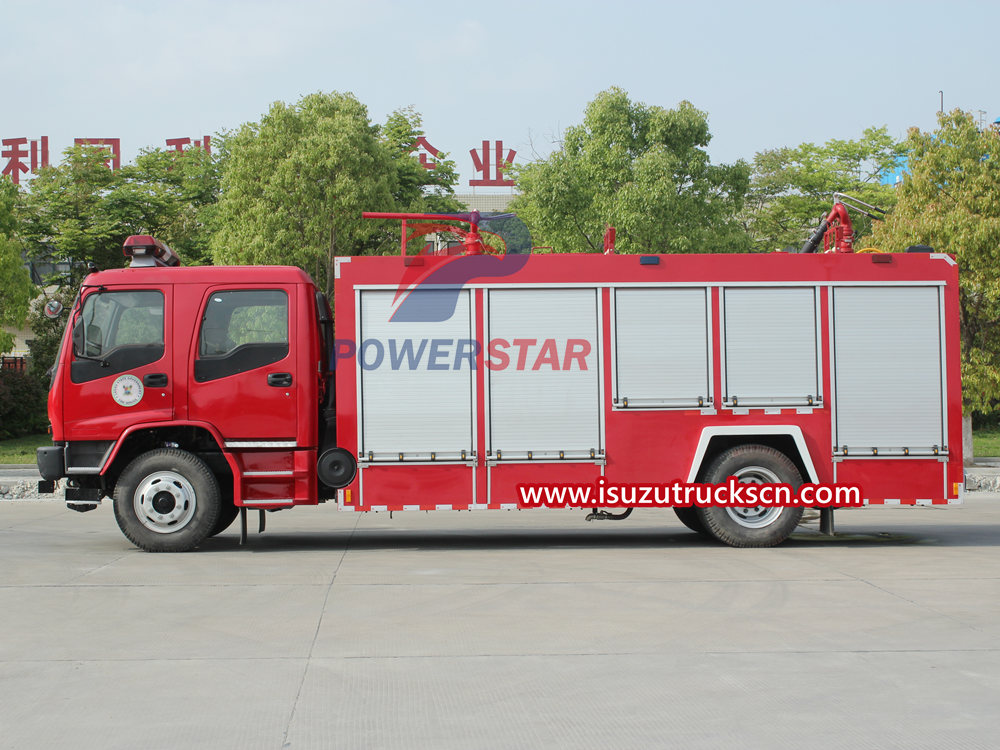
B. Vehicle-mounted cannon water discharge operation
1. Fire pump starting operation
1) After parking the heavy-duty water tank fire truck, you should first confirm that the liquid level in the water tank is above 30%, open the water tank outlet valve, and then start the fire pump.
2) Turn on the "tank water outlet" switch on the operation panel in the cab or the "tank water outlet" switch on the control panel in the pump room, and the water tank water outlet valve will open automatically. If the water tank outlet valve is not opened, you should choose to perform electric emergency operation first, then start the emergency operation, and then open the water tank outlet valve in priority order of manual emergency operation.
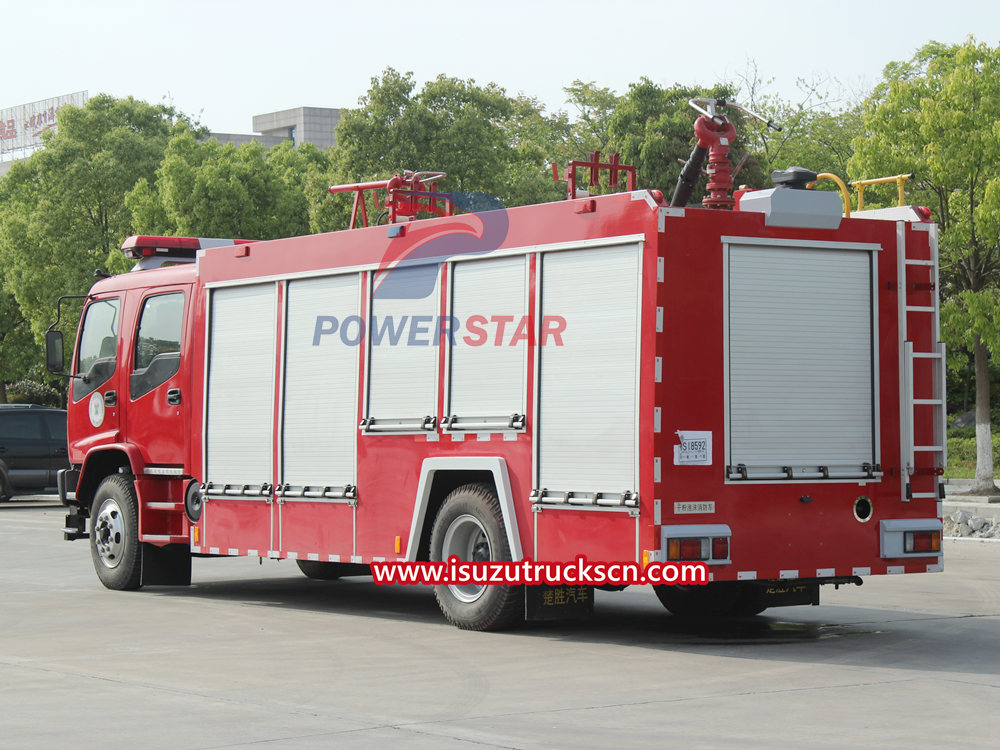
3) After the water tank outlet valve is opened, confirm that the gearbox is in neutral and the engine is running idle. After depressing the clutch for 3 seconds, move the fire pump power take-off switch to the on position, release the clutch pedal, and the fire pump starts to run at low speed.
2. Vehicle-mounted cannon water discharge operation
1) Before the vehicle-mounted cannon discharges water, the vehicle-mounted cannon jet setting should be carried out first, and then the vehicle-mounted cannon should eject water. Pay attention to the changes in water level when the water is discharged.
2) Plug in the wired remote control box of the vehicle-mounted gun and adjust the orientation and jet mode of the vehicle-mounted gun according to its panel operation prompts. When the gun rotates at a depression angle, attention should be paid to its rotation route to avoid damage.
3) Turn on the "gun spray" switch, slowly operate the hand throttle to adjust the fire pump outlet pressure, and the vehicle-mounted gun can spray water. When the vehicle-mounted gun comes out of the water, adjust the angle and jet mode of the vehicle-mounted gun in a timely manner. If you need to adjust the angle of the vehicle-mounted gun during high-speed jet flow, you should do so slowly to avoid damage to its transmission mechanism.
4) After the heavy water tank fire truck discharges water, you should pay attention to the water level indication of the water level meter. If the water level drops, you should replenish water in time. If the water replenishment conditions are not available on site and the water level is lower than the lower limit of the indicator meter, the fire pump power take-off should be turned off immediately switch.
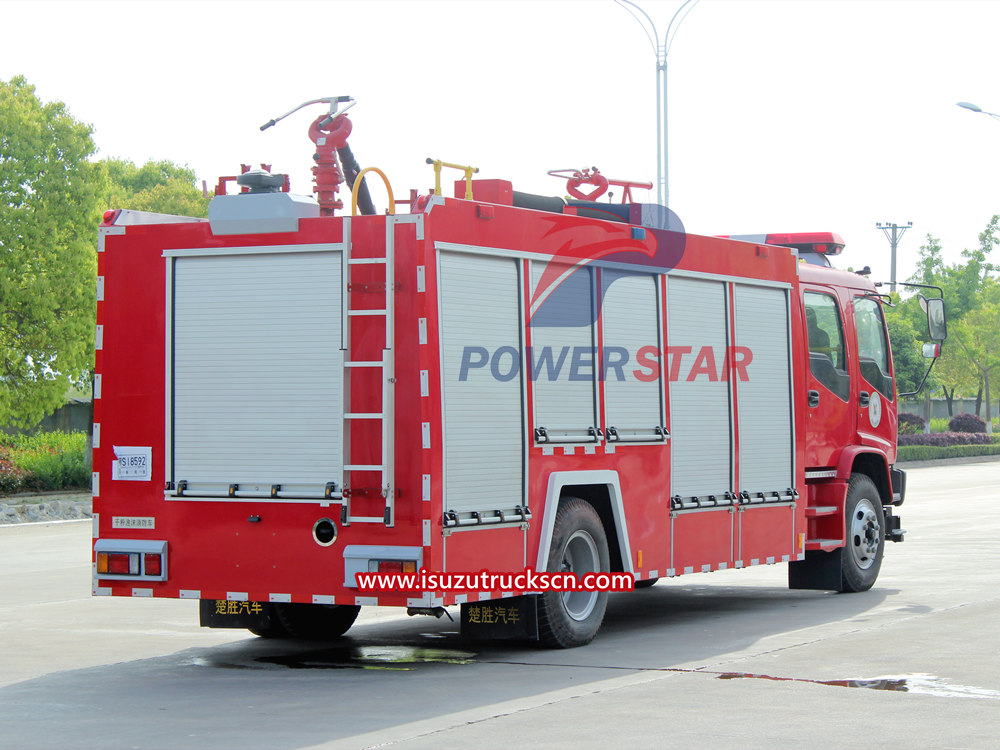
C. Water outlet operation
1) When a heavy-duty water tank fire truck needs to be connected to an external mobile fire cannon or fire water gun for water outlet operation, the equipment connection, fire pump start, water outlet and mechanical pressure balance control operations should be carried out in sequence. When the vehicle-mounted cannon discharges water, the water level changes should be observed in a timely manner. . When using a TFT mobile cannon to wade into water, the fire pump outlet pressure should not exceed 0.9MPa; when using a TFT fire gun, the fire pump outlet pressure should not exceed 0.7MPa to ensure the personal safety of the operator.
2) After connecting fire-fighting equipment such as fire guns or mobile cannons to the water outlet, open the corresponding water outlet valve.
3) After connecting the fire equipment, observe the pressure gauge, slowly adjust the manual throttle lever, and adjust the fire pump outlet pressure. In order to prevent the sudden change in the fire pump outlet pressure from threatening the safety of equipment and personnel, when water is discharged from the water outlet, the operator should operate the mechanical pressure balance system to control the fire pump outlet pressure. If the water outlet valve needs to be opened when the fire pump is started, the operator should stand in the direction and slowly open the outlet ball valve. The operator is strictly prohibited from facing the water outlet to open the outlet valve.
4) The unloading range of the mechanical pressure balance system is 0.5MPa~5.5MPa. First check to confirm that the "balance system" switch is in the "off" position, and adjust the manual throttle lever to amplify the fire pump pressure to the set pressure (mechanical pressure balance system (unloading pressure), turn the "pressure regulating valve" handwheel to the minimum position. Turn on the "balance system" switch "manual backup switch valve" handwheel to the maximum position, and then rotate the "pressure regulating valve" handwheel clockwise to the set unloading pressure. The mechanical pressure balance system can automatically control the fire pump outlet pressure not to exceed set value. In order to ensure the water outlet pressure in long-distance or high-rise water supply, the mechanical pressure balance system can be closed and the pressure control operation can be cancelled.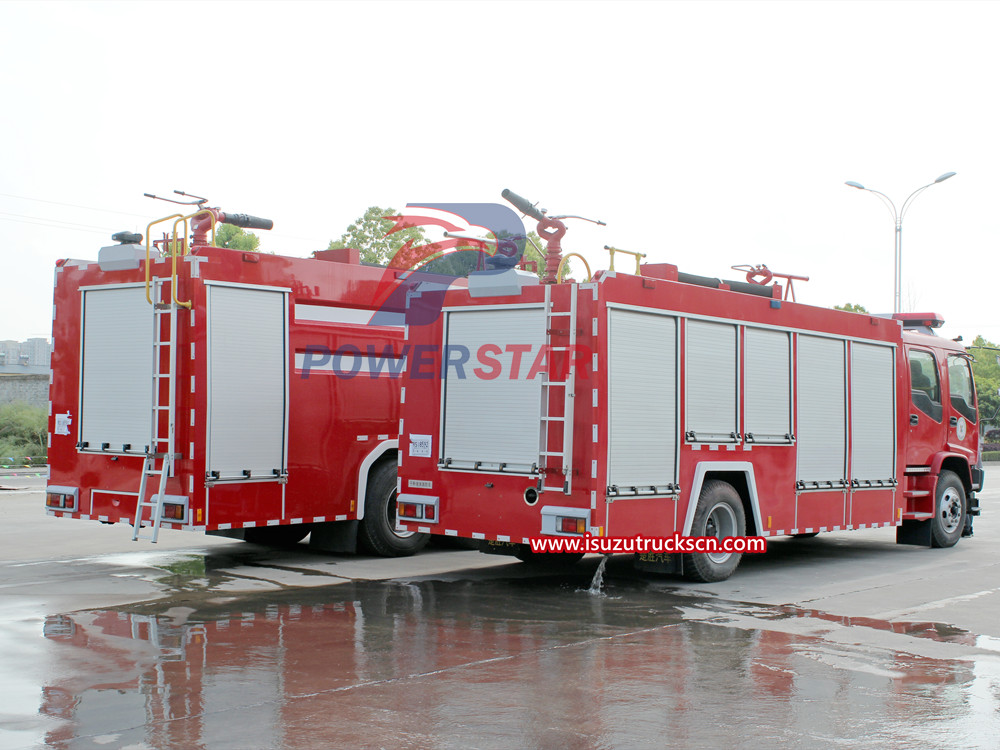
D. Hydration operation
1) Use external pressured water sources such as other fire trucks or fire hydrants to directly replenish water in the water tank. You should first use a water hose to reliably connect the fire hydrant (or water outlet of the water supply fire truck) to the replenishment port of the heavy water tank fire truck water tank, and then open it. The heavy-duty water tank fire truck water replenishment inlet valve and fire hydrant water supply switch (water supply fire truck water outlet valve) can realize water filling into the water tank.
2) If the site does not have the conditions for a pressurized water source to directly replenish water to the water tank, supply water directly to the fire pump through water suction operation, or directly supply water to the water tank through water suction operation.
3) During the water replenishment process, pay attention to the water level on the water level meter, and adjust the water supply volume in a timely manner to prevent the water tank from being evacuated or filled with water and overflowing. When stopping water replenishment, the fire hydrant water supply valve should be closed (or the external fire truck water supply should be stopped, or the fire pump should be turned off to stop water suction), and then the heavy water tank fire truck water replenishment inlet valve should be closed.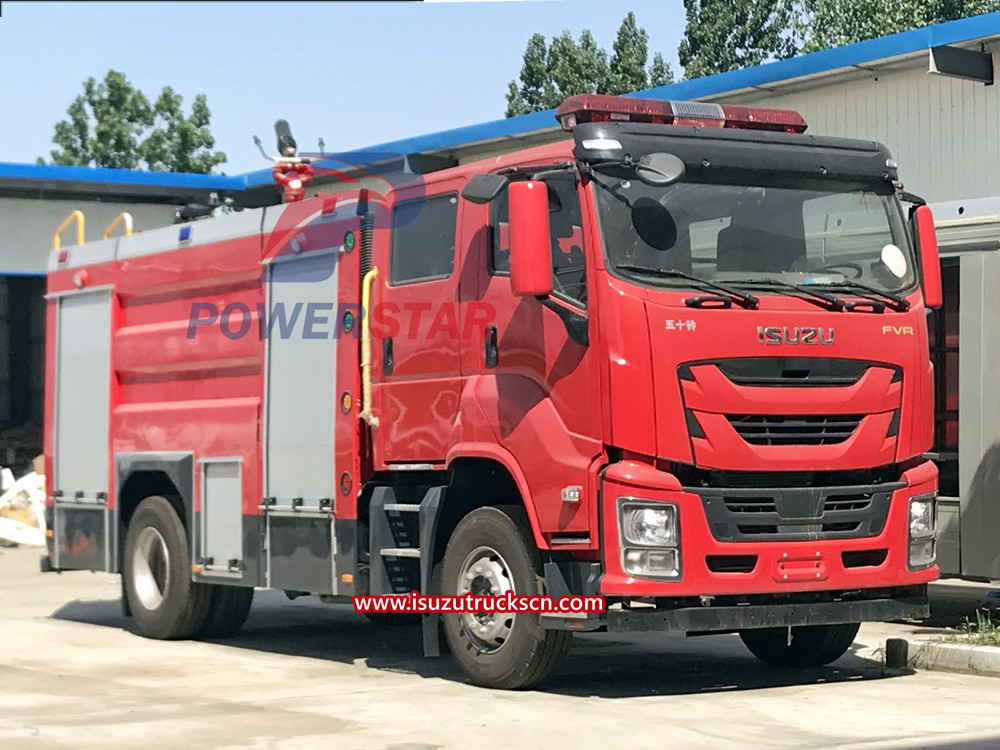
E. Car closing operation
1) When the heavy water tank fire truck is closed after the operation, the heavy water tank fire truck should be cleaned first (this operation is not required when using a radius water source), and then the fire pump should be turned off, residual water should be released and purged in sequence. operation, and finally carry out vehicle inspection.
2) Adjust the hand throttle to keep the fire pump outlet pressure at 0.2MPa~0.3MPa, flush the fire pump, vehicle-mounted cannon, hose, water gun, etc. until clean water flows out; open all outlet valves in sequence (including unused ones) , clean it and turn it off.
3) Rotate the "cleaning valve" on the mechanical pressure balance panel counterclockwise 2 to 3 times, and use the clean water sprayed from the fire pump outlet to clear the accumulation in the filter. Place the "balance system" switch in the middle position, open the drain valve behind the pressure regulating valve, and clean the control valve group.
4) After cleaning, adjust the hand throttle to the minimum, make the engine run idle, close the "cleaning valve" and "balance system" switches on the mechanical pressure balance panel; close the "tank water" switch, depress the clutch pedal and turn off the fire pump. Power take-off switch to stop fire pump operation.
5) After the fire truck water discharge operation is completed, open the drain valve behind the pressure regulating valve and the drain valve connected to the execution valve, and drain the rainwater in the balance control device; open the water outlet and water suction inlet valves, and the waterproof valve at the bottom of the fire pump, and drain the water. Clean the remaining water in the fire pump and pipelines. In the cold winter, turn on the water drain switch next to the power take-off and drain the remaining water in the power take-off. After draining the remaining water, turn off the "cannon water" switch, return the vehicle-mounted cannon to its position, and promptly close all water outlet valves and all remaining water drain valves at the rear of the vehicle.
6) After the residual water is released, open the pipeline purge valve, the "water pump drain" valve, and the water outlet drain valve on the solenoid valve row of the pump room to purge them; after the purge is completed, close the pipeline purge valve. and all drain valves.
7) After the above operations are completed, the remaining water in the clean water belt should be drained in time, and all used mobile cannons, fire guns, water hoses, water hose bridge protection and other equipment should be returned to their original positions and fixed. Check and ensure that the valve of the heavy water tank fire truck reaches the required switching state, check the fire pump, and the power take-off switch should be in a closed state, and finally collect the vehicle and return to the team.




